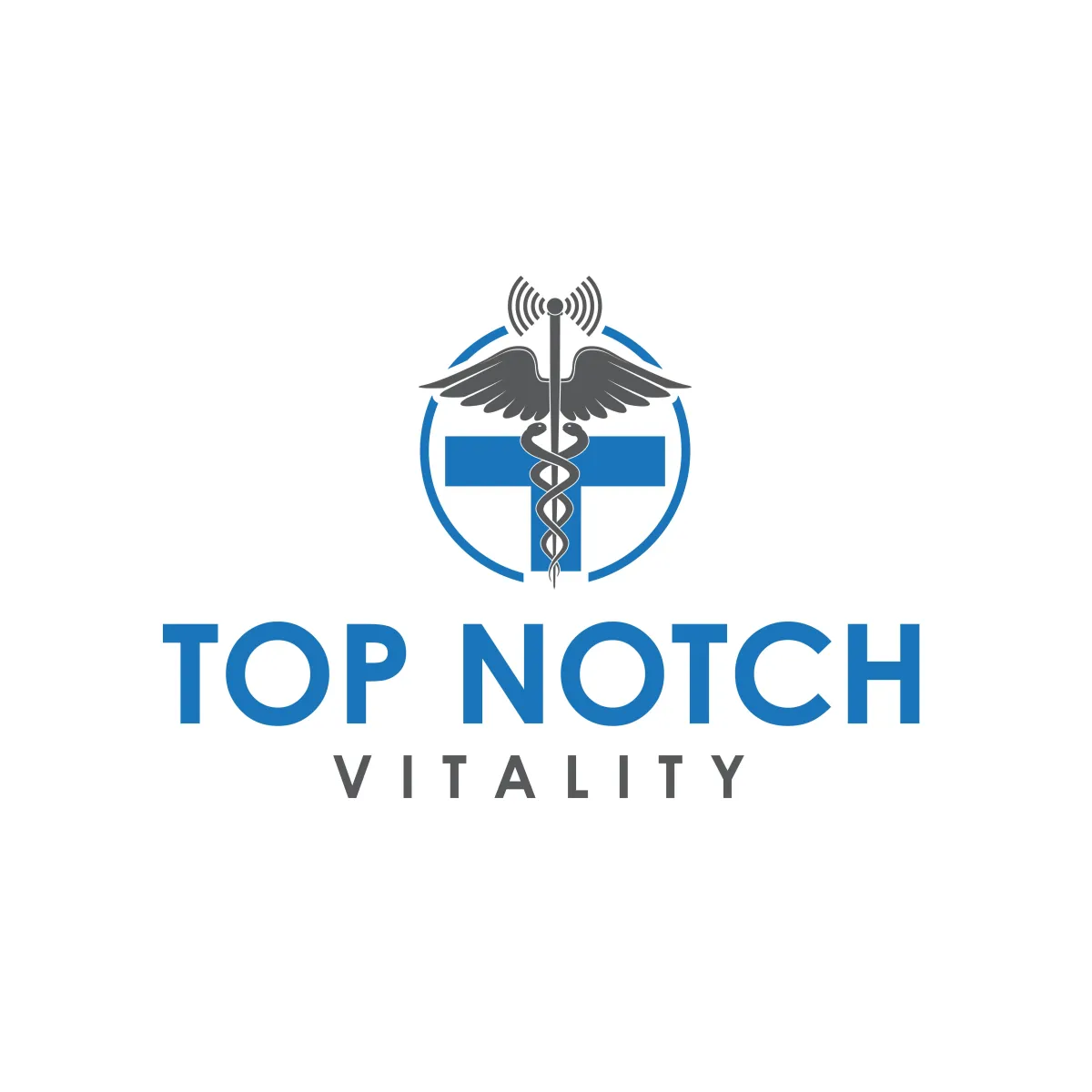The Top Notch Vitality Blog!

"We have made the healthcare process simple, safe, and affordable so that if someone is sick or suffering from an illness they can receive prompt and professional care without delay."
Derek Hazelwood FNP-C

Expand Your Telemedicine Knowledge with These Essential Reads
Telemedicine has become an increasingly important aspect of healthcare in recent years, especially with the ongoing COVID-19 pandemic. As the demand for telemedicine services continues to grow, it is crucial for healthcare providers, policymakers, and patients alike to have a solid understanding of the field. Fortunately, there are numerous books available that provide valuable insights and guidance on various aspects of telemedicine. In this article, we will introduce you to six essential telemedicine books that can help you expand your knowledge and expertise in the field. From practical guides to comprehensive overviews of telemedicine technologies, these books offer something for everyone who is interested in telemedicine. Whether you are a healthcare provider looking to implement telemedicine in your practice or a patient who wants to learn more about the benefits of telemedicine, these essential reads are sure to help you deepen your understanding of this rapidly evolving field.
"The Guide to the Future of Medicine: Technology and the Human Touch" by Bertalan Mesko
"The Guide to the Future of Medicine" is a comprehensive and thought-provoking exploration of the intersection of healthcare and technology. In the book, Mesko examines the ways in which technology is transforming the field of medicine, and provides insights into how healthcare providers and patients can navigate this rapidly-evolving landscape. The book covers a wide range of topics, including telemedicine, artificial intelligence, genomics, and more. Mesko argues that technology has the potential to revolutionize healthcare in numerous ways, from improving the accuracy of medical diagnoses to enabling patients to take a more active role in their own health.
Throughout the book, Mesko also emphasizes the importance of maintaining a human touch in healthcare. While technology can undoubtedly improve the efficiency and effectiveness of medical care, he argues that it should not replace the vital role that human empathy and connection play in healing. Mesko provides practical guidance for healthcare providers and policymakers on how to strike a balance between leveraging technology and preserving the human element of medicine. Overall, "The Guide to the Future of Medicine" is a valuable resource for anyone interested in the future of healthcare, and the ways in which technology is shaping the field.
"Telemedicine and Telehealth: Principles, Policies, Performance and Pitfalls" by Margaret Cary and Michael Brennan:
"Telemedicine and Telehealth" is a comprehensive and authoritative guide to the field of telemedicine. The book covers a wide range of topics, including the history of telemedicine, current practices, and future directions. The authors provide practical guidance for healthcare providers on how to implement and sustain a successful telemedicine program, including advice on choosing the right technology, developing policies and procedures, and navigating legal and regulatory issues. The book also examines the potential benefits and challenges of telemedicine, and provides insights into how telemedicine can be used to improve access to healthcare in underserved communities.
The authors, Margaret Cary and Michael Brennan, are both experienced healthcare professionals with extensive expertise in telemedicine. They bring a wealth of knowledge and insights to the book, drawing on their own experiences as well as the latest research and best practices in the field. Throughout the book, they emphasize the importance of developing a patient-centered approach to telemedicine, and provide practical guidance on how to do so. Overall, "Telemedicine and Telehealth" is a valuable resource for healthcare providers, policymakers, and anyone interested in the field of telemedicine.
"Telemedicine for Children's Health" by Ronald Cohn and Richard Schreiber: "The Telemedicine Guidebook: Second Edition" by L. Suzanne Suggs and Kristin Klimley
"Telemedicine for Children's Health" is a comprehensive guide to using telemedicine to provide care for children. The book covers a wide range of topics, including the benefits and challenges of telemedicine, practical guidance on implementing a telemedicine program for pediatric care, and case studies of successful telemedicine programs for children's health. The authors, Ronald Cohn and Richard Schreiber, are both experienced healthcare professionals with expertise in pediatric care and telemedicine. They draw on their own experiences as well as the latest research and best practices in the field to provide practical guidance for healthcare providers on how to effectively use telemedicine to improve the health and well-being of children.
"The Telemedicine Guidebook: Second Edition" is a practical and informative resource for healthcare providers who are interested in implementing telemedicine in their practices. The book covers a wide range of topics, including the benefits and challenges of telemedicine, choosing the right technology, legal and regulatory issues, and best practices for providing telemedicine care. The authors, L. Suzanne Suggs and Kristin Klimley, are both experienced healthcare professionals with expertise in telemedicine. They provide practical guidance on how to develop a successful telemedicine program, and offer case studies and examples of successful telemedicine programs in various healthcare settings. Overall, "The Telemedicine Guidebook" is a valuable resource for healthcare providers who are interested in using telemedicine to improve the quality of care they provide to their patients.
"Telehealth Nursing: Tools and Strategies for Optimal Patient Care" by Dr. Joyce J. Fitzpatrick and Dr. Christina A. Bove
"Telehealth Nursing" is a comprehensive guide to using telehealth in nursing practice to provide optimal patient care. The book covers a wide range of topics, including the history of telehealth, the impact of technology on nursing practice, and the role of telehealth in improving patient outcomes. The authors, Dr. Joyce J. Fitzpatrick and Dr. Christina A. Bove, are both experienced nurses and healthcare professionals with extensive expertise in telehealth. They provide practical guidance for nurses on how to use telehealth to assess, diagnose, and treat patients in a variety of settings, including hospitals, clinics, and home care.
The book also covers important topics such as legal and ethical considerations for telehealth nursing practice, selecting the appropriate telehealth technology, and the importance of communication and collaboration in telehealth care. The authors provide real-world examples and case studies throughout the book to illustrate best practices and demonstrate the benefits of telehealth nursing. Overall, "Telehealth Nursing" is an essential resource for nurses and healthcare professionals who are interested in using telehealth to provide optimal patient care and improve health outcomes.
"Telemedicine Technologies: Information Technologies in Medicine and Telehealth" by Bernard Fong, A.C.M. Fong, and C.K.
"Telemedicine Technologies" is a comprehensive guide to the use of information technologies in telemedicine and telehealth. The book covers a wide range of topics, including the history and evolution of telemedicine, the technologies and systems used in telemedicine, and the impact of telemedicine on healthcare delivery. The authors, Bernard Fong, A.C.M. Fong, and C.K. Li, are all experienced healthcare professionals and researchers with expertise in telemedicine and information technology. They provide a detailed overview of the latest technologies and systems used in telemedicine, including remote monitoring, video conferencing, and mobile health applications.
The book also covers important topics such as telemedicine ethics and legal issues, as well as the challenges and opportunities in the implementation and adoption of telemedicine technologies. The authors provide real-world examples and case studies throughout the book to illustrate best practices and demonstrate the benefits of telemedicine technologies. Overall, "Telemedicine Technologies" is a valuable resource for healthcare professionals, researchers, and students who are interested in the use of information technologies in telemedicine and telehealth.
Telemedicine has become increasingly important in healthcare in recent years, especially during the ongoing COVID-19 pandemic. With the growing demand for telemedicine services, it is essential for healthcare providers, policymakers, and patients to have a solid understanding of the field. Fortunately, there are numerous books available that provide valuable insights and guidance on various aspects of telemedicine. These books offer something for everyone, from practical guides to comprehensive overviews of telemedicine technologies. They can help healthcare providers implement telemedicine programs, offer guidance to patients, and aid policymakers in navigating legal and regulatory issues.
It is vital to be open to telemedicine to reap the many benefits it offers, including improved access to healthcare and the potential to revolutionize the field of medicine. As we move towards a more technology-driven future, it is essential to strike a balance between leveraging technology and preserving the human element of medicine. Let us embrace telemedicine to improve the quality of care we provide and ensure that everyone has access to healthcare, no matter where they are.
Get a Consultation with Derek Hazelwood FNP-C TODAY!
Top Notch Vitality strives to eliminate barriers that keep individuals from seeking and/or receiving professional healthcare. Access to healthcare should not only be available to certain individuals, but to all people in need.
Call
(214) 509-8715
Email
support@topnotchvitality.com
Site
www.topnotchvitality.com




